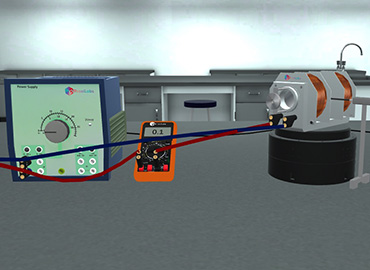The splitting of the Cd-spectral line λ = 643.8 nm into three lines, the so-called Lorentz triplets, occurs since the Cd-atom represents a singlet system of total spin S = 0. In the absence of a magnetic field there is only one possible transition of 643.8 nm,
1D2 (J = 2, S = 0) → 1P1 (J = 1, S = 0)
In the presence of a magnetic field the associated energy levels split into 2 J + 1 components. Radiating transitions between these components are possible, provided that the selection rules
ΔMJ = +1; ΔMJ = 0; ΔMJ = –1
are taken into account. In this case, therefore, there are a total of nine permitted transitions, only three of which ever have the same energy and hence the same wavelength. Therefore, only three lines will be visible.



















